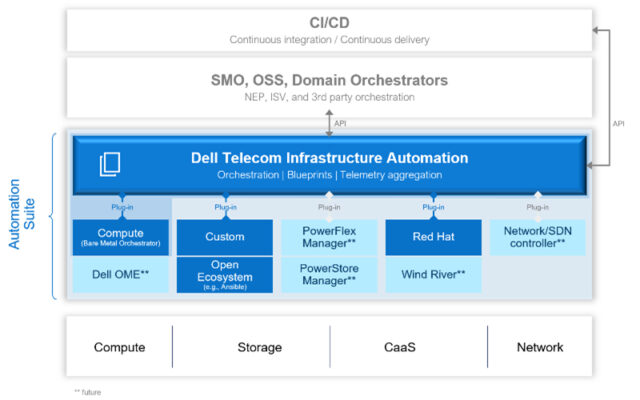As a child growing up in New York, I was not the biggest or most athletic kid on the block and as was typical at that time, it led to all kinds of “interesting” interactions with various other people. As a result, my father enrolled me in my first set of Karate classes to help me learn some self-defense and to toughen me up mentally and physically. Over the years, I’ve had the great opportunity to practice Karate, Kung Fu, Krav Maga and several other martial art disciplines. One thing that struck me recently was the similarity between martial arts practice and what we need to do as we modernize the telecom network and its operations.
In martial arts, you’re constantly assessing information from your surrounding environment (as well as yourself), analyzing that information to find common patterns, and then formulating an appropriate response to prevent something bad from happening—sometimes proactively. In essence, you have your own closed-loop automation system you are continuously improving based on intelligence, training and experience.
We’re increasingly asked by our telecom customers how to cloudify the telecom network and reap the economic and agility benefits of such a transformation. And we realized we needed to invest in a set of software tools at the infrastructure layer to make the benefits seen in various verticals true in the telecom environment. While there are all levels of expertise in building telecom cloud networks, we see many communications service providers (CSPs) who are closer to a Karate white belt, as opposed to a black belt, in their ability to operate these modernized networks in an efficient and effective manner.
In telecom networks, automation has long played an essential role. But as infrastructure transforms from tightly integrated vertical stacks to open, horizontal layers, the number of moving parts that must work together goes way up. What was once a mostly single-vendor environment is made up of technologies from multiple vendors throughout the stack. The only way to overcome this complexity and reap the benefits of a modern telco cloud—flexibility, agility, efficiency—is to deploy vendor-agnostic, comprehensive automation that integrates into your operating environment.
At Dell, we’re committed to helping communications service providers do exactly that. Designed from the ground up to support open, cloud-native networks, the new Dell Telecom Infrastructure Automation Suite simplifies and accelerates your cloud transformation by automating the management and orchestration of the network infrastructure. The suite unifies management and orchestration in a single plane and is easily extensible to any infrastructure controller up to, but not including, the CaaS layer. With the suite, you can enable your teams to meet your unique business requirements, as you automate and standardize operations for flexibility and agility, as well as lay the groundwork for AIOps improvements in the future.
A Closer Look at the Dell Telecom Infrastructure Automation Suite

At the highest level, the suite is a vendor-agnostic software solution that automates the management and orchestration of open network infrastructure. The platform provides a management and orchestration plane for cloud infrastructure and features an open architecture for easy extensibility. Having the capability to deploy servers to CaaS and to automate infrastructure lifecycle operations, it is the central automation controller for multicloud environments, extending from hyperscalers to the core cloud, enterprise cloud, edge and RAN. It seamlessly orchestrates domain-specific infrastructure controllers, promoting cross-domain automation and bridging the vertical silos that once existed in telecom environments. This integration capability allows for seamless operation with existing OSS/BSS systems, preventing the creation of new automation islands. In addition, the suite includes a controller for automating the deployment and lifecycle management of bare metal servers, consolidates inventory and aggregates infrastructure telemetry, laying the groundwork for AIOps.
APIs enable easy integration of the Suite with higher-level network orchestrators, such as a domain orchestrator in the Core or an SMO in the RAN.
Plug-ins connect to resource controllers for servers, CaaS, storage and network equipment to the platform. You can choose either off-the-shelf plug-ins or work with Dell or a systems integrator to build custom plug-ins. At launch, we’re offering an off-the-shelf plug-in for Red Hat.
TOSCA-based blueprints bring it all together to enable CSPs to implement their workflow and intent as declarative blueprints and automate execution consistently without manual errors and delays. Dell will offer basic blueprints with an SDK, but you can create your own blueprints or work together with Dell Services or a systems integrator. The use of TOSCA-based templates ensures blueprints are portable and fit well into a GitOps operating model, allowing CSPs to adopt modern cloud operating models and extend Infrastructure-as-Code to the infrastructure layer.
To support the suite, the Dell Services team is ready to assist you from day 0 tasks to day 2. For day 0 discovery and design requirements, Dell Services offers business outcome workshops, tailored design and blueprint development, configuration of your cloud platform stack and design fine-tuning. As you deploy and integrate on day 1, we can simplify deployment with remote implementation and drive specific outcomes with custom integration, including integration of your DevOps tools (Git, ArgoCD, Kafka, etc.). We can also help with day 2 management and support activities by simplifying upgrades, updates, rollbacks and expansions, providing comprehensive 24x7x365 assistance with proactive predictive failure detection, accelerating issue resolution with restoration SLAs and enabling you to leverage a dedicated telecom-trained account team.
Core Capabilities of Dell Telecom Infrastructure Automation Suite
The suite offers a list of capabilities and benefits that is too long to fit into one blog post, but here are the highlights:
-
- Lifecycle management and fault remediation enable operators to consume infrastructure through a CI/CD workflow as they move to cloud operating models, especially around day 2 operational issues.
- Customizable blueprints and plug-ins enable CSPs to implement their workflow and intent as declarative blueprints, automate the execution consistently without manual errors and delays.
- Golden configuration and drift detection enable the detection of configuration drift and facilitate replacement and rebuild of servers (integrating storage with CaaS is on the roadmap).
- Aggregation and exporting of telemetry enable CSPs to implement service assurance, predictive analytics and closed-loop automation with AI Ops.
The move to a modern cloud-native network is gaining momentum across CSP networks. Many are finding it is critical and essential to remaining competitive in today’s markets as they consider their future as a Digital Service Provider and want to move at the “speed of software” in rolling out new services. In the ever-faster-evolving telecom market, an automated cloud operating model is the best way to achieve the flexibility, agility and efficiency at scale that CSPs require to innovate and compete, while controlling costs.
To learn more about the Dell Telecom Infrastructure Automation Suite, visit us in Hall 3, booth 3M30 at Mobile World Congress in Barcelona to see everything that it can do and how it can accelerate your move to open networks and AIOps. To read more about Dell Telecom Infrastructure Automation Suite, read our solution brief.
Enjoy your training in both your personal life and your network operations.


